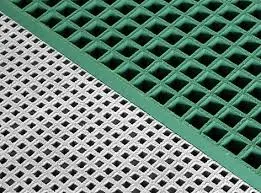
-
 Afrikaans
Afrikaans -
 Albanian
Albanian -
 Amharic
Amharic -
 Arabic
Arabic -
 Armenian
Armenian -
 Azerbaijani
Azerbaijani -
 Basque
Basque -
 Belarusian
Belarusian -
 Bengali
Bengali -
 Bosnian
Bosnian -
 Bulgarian
Bulgarian -
 Catalan
Catalan -
 Cebuano
Cebuano -
 China
China -
 China (Taiwan)
China (Taiwan) -
 Corsican
Corsican -
 Croatian
Croatian -
 Czech
Czech -
 Danish
Danish -
 Dutch
Dutch -
 English
English -
 Esperanto
Esperanto -
 Estonian
Estonian -
 Finnish
Finnish -
 French
French -
 Frisian
Frisian -
 Galician
Galician -
 Georgian
Georgian -
 German
German -
 Greek
Greek -
 Gujarati
Gujarati -
 Haitian Creole
Haitian Creole -
 hausa
hausa -
 hawaiian
hawaiian -
 Hebrew
Hebrew -
 Hindi
Hindi -
 Miao
Miao -
 Hungarian
Hungarian -
 Icelandic
Icelandic -
 igbo
igbo -
 Indonesian
Indonesian -
 irish
irish -
 Italian
Italian -
 Japanese
Japanese -
 Javanese
Javanese -
 Kannada
Kannada -
 kazakh
kazakh -
 Khmer
Khmer -
 Rwandese
Rwandese -
 Korean
Korean -
 Kurdish
Kurdish -
 Kyrgyz
Kyrgyz -
 Lao
Lao -
 Latin
Latin -
 Latvian
Latvian -
 Lithuanian
Lithuanian -
 Luxembourgish
Luxembourgish -
 Macedonian
Macedonian -
 Malgashi
Malgashi -
 Malay
Malay -
 Malayalam
Malayalam -
 Maltese
Maltese -
 Maori
Maori -
 Marathi
Marathi -
 Mongolian
Mongolian -
 Myanmar
Myanmar -
 Nepali
Nepali -
 Norwegian
Norwegian -
 Norwegian
Norwegian -
 Occitan
Occitan -
 Pashto
Pashto -
 Persian
Persian -
 Polish
Polish -
 Portuguese
Portuguese -
 Punjabi
Punjabi -
 Romanian
Romanian -
 Russian
Russian -
 Samoan
Samoan -
 Scottish Gaelic
Scottish Gaelic -
 Serbian
Serbian -
 Sesotho
Sesotho -
 Shona
Shona -
 Sindhi
Sindhi -
 Sinhala
Sinhala -
 Slovak
Slovak -
 Slovenian
Slovenian -
 Somali
Somali -
 Spanish
Spanish -
 Sundanese
Sundanese -
 Swahili
Swahili -
 Swedish
Swedish -
 Tagalog
Tagalog -
 Tajik
Tajik -
 Tamil
Tamil -
 Tatar
Tatar -
 Telugu
Telugu -
 Thai
Thai -
 Turkish
Turkish -
 Turkmen
Turkmen -
 Ukrainian
Ukrainian -
 Urdu
Urdu -
 Uighur
Uighur -
 Uzbek
Uzbek -
 Vietnamese
Vietnamese -
 Welsh
Welsh -
 Bantu
Bantu -
 Yiddish
Yiddish -
 Yoruba
Yoruba -
 Zulu
Zulu
frp absorber
The Importance of FRP Absorbers in Modern Engineering
Fiber Reinforced Polymer (FRP) absorbers have emerged as a significant innovation in various engineering fields, particularly for noise and vibration control. As urbanization increases and industries grow, the need for effective sound absorption and vibration damping solutions becomes more critical. FRP absorbers offer a lightweight, durable, and efficient alternative to traditional materials, making them invaluable in modern engineering applications.
What are FRP Absorbers?
FRP absorbers are composite materials consisting of a polymer matrix reinforced with fibers, typically glass or carbon. The combination of these materials results in products that exhibit an impressive balance of strength, stiffness, and lightness. One of the key properties of FRP is its ability to absorb and dissipate energy, making it particularly effective in mitigating sound and vibrations in various environments.
Applications of FRP Absorbers
One of the most notable applications of FRP absorbers is in the field of construction and building acoustics. In urban environments, where noise pollution is a significant concern, FRP absorbers can be integrated into walls, ceilings, and facades to enhance acoustic performance. By effectively trapping and reducing sound waves, these materials contribute to creating quieter indoor spaces, leading to improved comfort and productivity for occupants.
Moreover, FRP absorbers are extensively used in the automotive and aerospace industries. Vehicles and aircraft are subjected to numerous vibrations during operation, which can lead to material fatigue and reduce overall performance. By integrating FRP absorbers into vehicle structures, manufacturers can enhance the durability and stability of their products while simultaneously improving ride quality for users. This not only augments the consumer experience but also reduces the need for maintenance and repairs, leading to cost savings in the long run.
frp absorber

In the realm of industrial machinery, FRP absorbers play a pivotal role in reducing noise and mechanical vibrations. Heavy machinery often generates significant sound pollution, which can have harmful effects on workers’ health and safety. The incorporation of FRP absorbers into these systems helps to create a safer working environment by lowering noise levels and minimizing vibration-related wear and tear on equipment. Consequently, this results in increased operational efficiency and longevity of machinery.
Benefits of Using FRP Absorbers
The advantages of FRP absorbers extend beyond their acoustic properties. One of the most significant benefits is their lightweight nature compared to conventional materials like concrete or metal. This characteristic not only facilitates easier handling and installation but also contributes to overall energy savings during transportation and construction.
Additionally, FRP materials exhibit high resistance to corrosion and environmental degradation. This makes them suitable for use in harsh environments where traditional materials might falter, such as coastal regions or industrial settings with chemical exposure. By preventing deterioration, FRP absorbers ensure longevity and reduce lifecycle costs, making them a cost-effective solution in the long term.
Conclusion
In summary, FRP absorbers represent a significant advancement in engineering materials, providing versatile solutions for a variety of applications related to sound and vibration management. Their lightweight, durable, and resilient nature makes them ideal for modern challenges in urban construction, automotive design, aerospace engineering, and industrial machinery. As technology advances and the demand for effective noise and vibration control continues to grow, the role of FRP absorbers in enhancing quality of life, safety, and productivity will only become more prominent. As industries increasingly prioritize sustainability and efficiency, FRP absorbers stand out as a forward-thinking solution, combining performance with environmental considerations to meet the needs of the future.









